Are your city's garbage trucks too clumsy for its streets? They struggle with tight corners, causing delays and missed pickups. This common problem comes down to a single, critical specification.
The ideal turning radius is the one that fits the environment. For electric waste tricycles in dense urban alleys, this is typically under 3 meters. For compact 4-wheel trucks on secondary roads, an effective radius is between 5.5 and 7.0 meters.
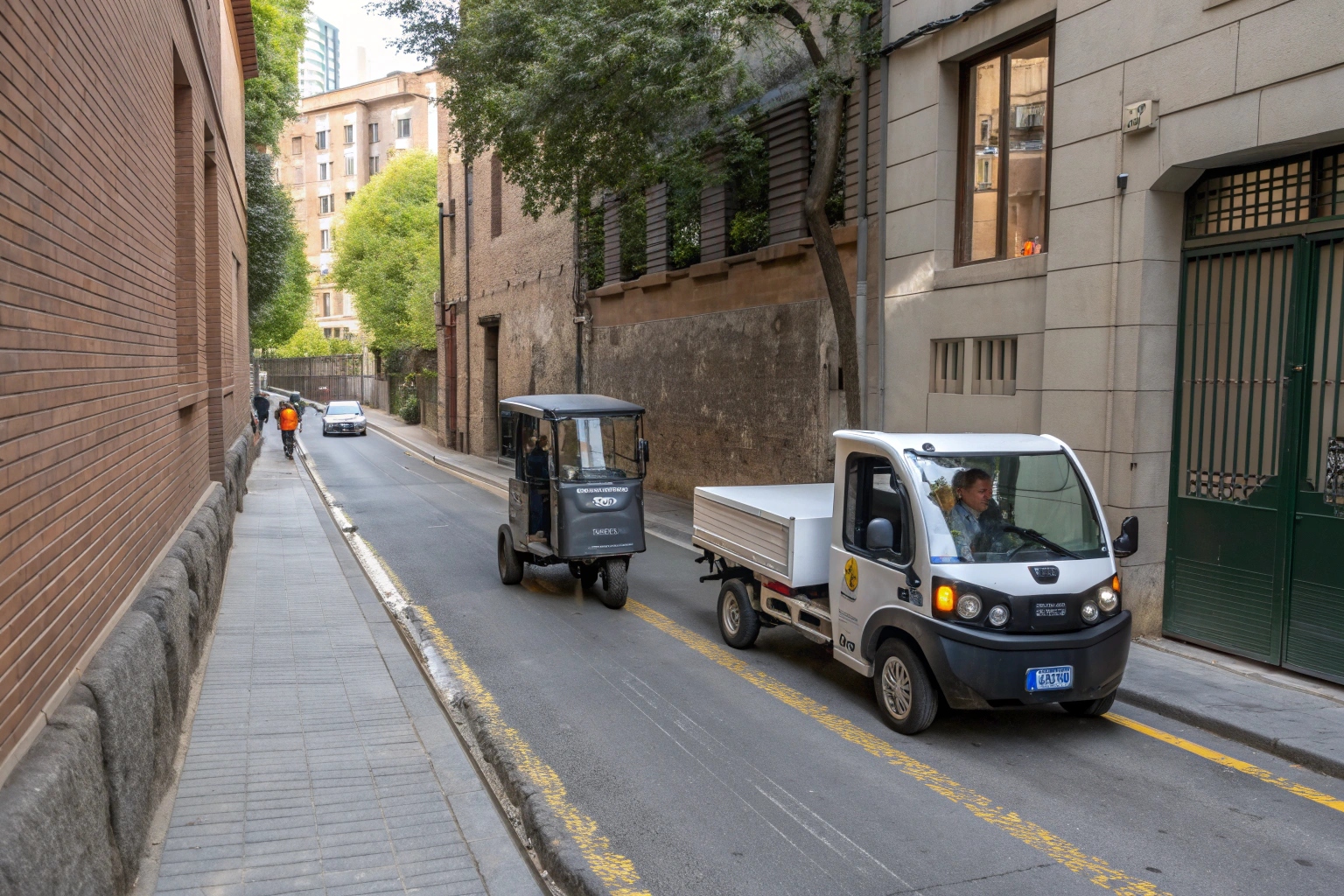
Bilang a Pabrika that builds these vehicles, I can tell you that turning radius is one of the most important numbers we discuss with clients. It’s not just a technical detail on a spec sheet. A few centimeters can determine whether a vehicle can do its job or not. We've seen sanitation projects succeed or fail based on this single measurement. Understanding why it's so important will help you choose the right vehicle for your city and avoid costly mistakes.
Why is turning radius a key factor in urban waste collection efficiency?
Your operators waste time and fuel making slow, difficult three-point turns. This leads to longer routes and incomplete collections. A vehicle with the right turning radius works faster and smarter.
A tight turning radius allows sanitation vehicles to navigate narrow alleys and sharp corners without stopping and reversing. This directly improves route speed, reduces missed pickups, and lowers fuel or battery consumption in dense urban areas.
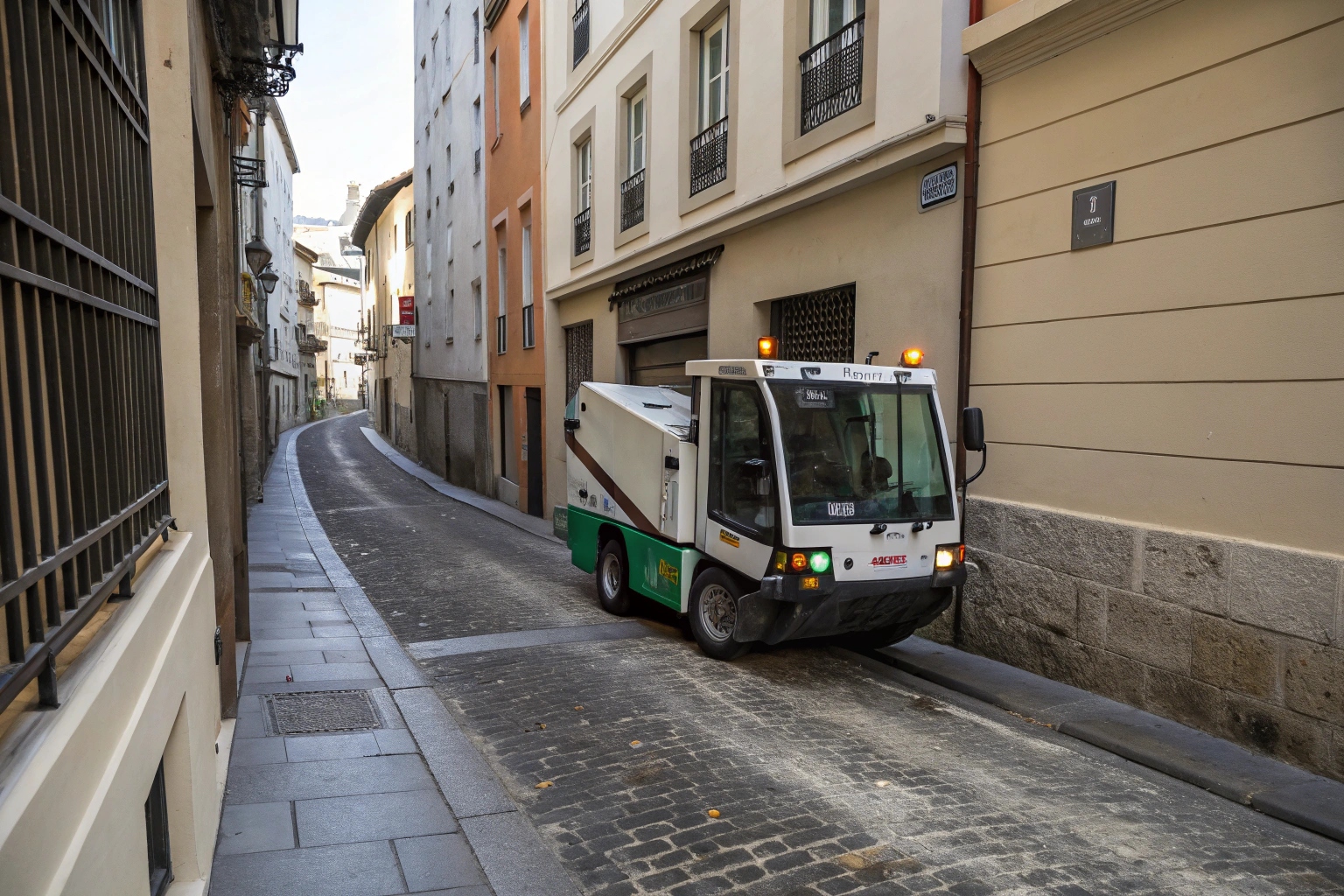
I often speak with municipal managers who are frustrated with their current fleet's performance. Their trucks are sturdy, but they just aren't built for the reality of their city's layout. This is especially true for routes that go through older city centers or busy morning markets where space is limited. Efficiency isn't about top speed; it's about continuous movement. A vehicle that can make a smooth U-turn in a tight space will complete its route much faster than a larger one that has to constantly stop, reverse, and maneuver.
This improved maneuverability brings several key benefits:
- Faster Route Completion: Less time spent on difficult turns means operators can cover more ground in the same amount of time.
- Reduced Energy Consumption: Every stop and start uses extra energy. Smooth, continuous driving is more efficient, saving battery life or fuel.
- Improved Safety: Less reversing in crowded areas significantly reduces the risk of accidents involving pedestrians or property.
- Full Coverage: Vehicles can access 100% of the planned route, ensuring no households are missed.
A project manager from a historic European town once told me our electric trikes cut their collection time by 30%. Why? Because the trikes could easily handle the old town's sharp, narrow corners, something their previous mini-trucks couldn't do without blocking the entire street.
What turning radius is considered ideal for 3-wheel and 4-wheel waste vehicles?
You know you need a smaller vehicle, but how small is right? Choosing a vehicle that's still too large for the job is a waste of money. The specific turning radius numbers tell you what will work.
For dense, inner-city routes, an ideal turning radius for a 3-wheel electric tricycle is between 2.4 and 3.0 meters. For a compact 4-wheel garbage truck operating on larger streets, a radius of 5.5 to 7.0 meters is effective.
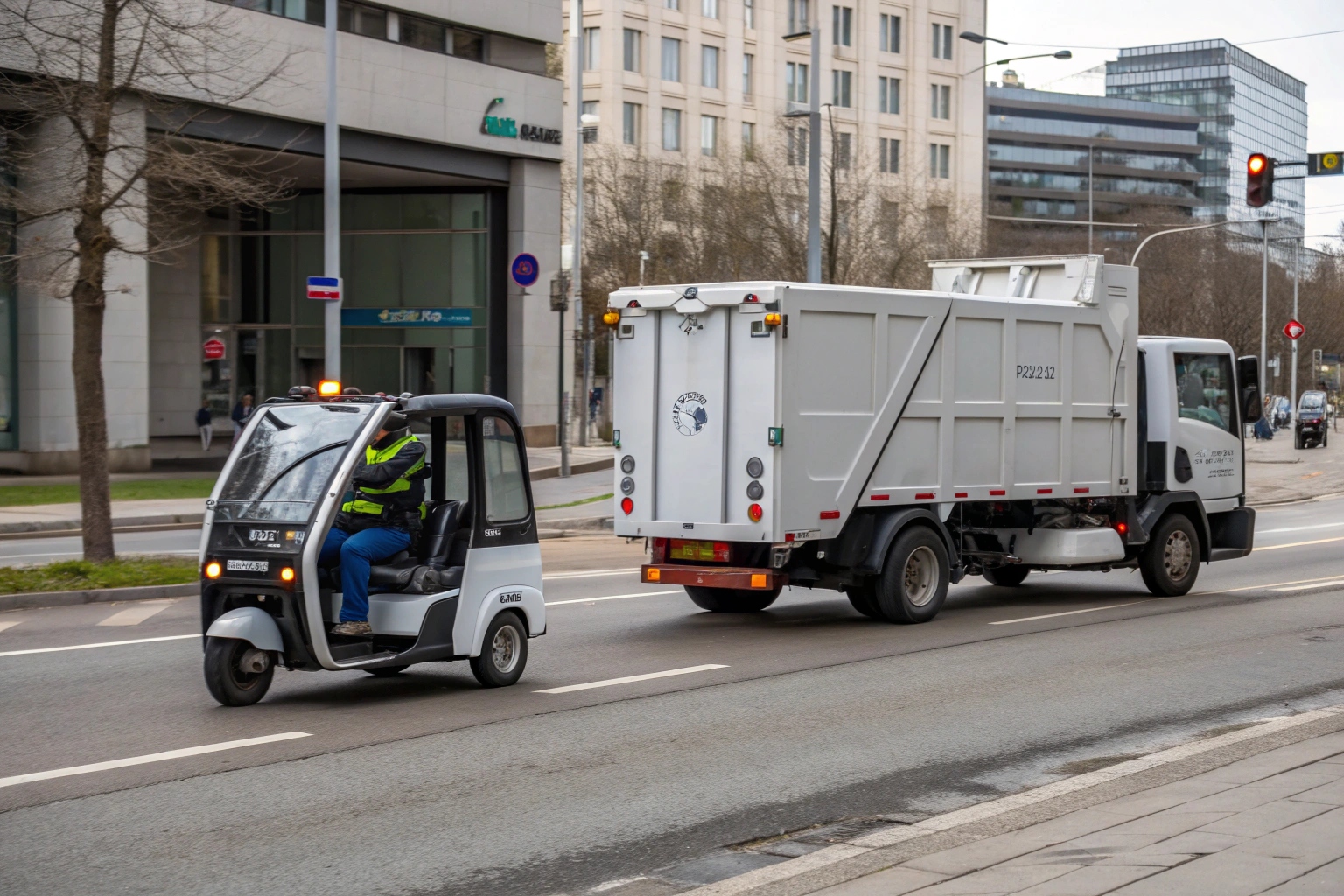
When a new client approaches us, one of the first things we help them determine is the right vehicle type for their specific operational zone. The choice between a 3-wheeler and a 4-wheeler often comes down to turning performance. The environment dictates the machine.
The numbers are different for a simple reason: their design and intended use. An electric tricycle's agility comes from its single front wheel, which allows the entire vehicle to pivot in a very small space. This makes it the undisputed champion of door-to-door collection in the narrowest environments. A compact 4-wheel truck offers a larger cargo capacity, but its two front wheels limit how sharply it can turn. It is a good compromise for collecting waste from larger bins on secondary roads that are still too tight for full-sized trucks.
| Uri ng sasakyan | Ideal Turning Radius | Best Use Case |
|---|---|---|
| 3-Wheel Electric Tricycle | 2.4 – 3.0 meters | Narrow alleys, dense settlements, historic centers. |
| Compact 4-Wheel Truck | 5.5 – 7.0 meters | Secondary urban roads, gated communities. |
| Standard na trak ng basura | 10+ meters | Main roads and industrial areas. |
We always ask our importing partners: are your operators collecting bags from every doorstep, or are they emptying communal bins on the street? The answer to that question immediately tells us which turning radius, and therefore which vehicle, is right for them.
How does garbage tricycle optimize turning performance in sanitation vehicles?
You need a vehicle that can turn on a dime, but you worry that a small trike might be unstable or difficult to steer. A good design must be both agile and safe to operate.
Our electric garbage tricycles feature a class-leading 2.4-meter turning radius. We achieve this with a purpose-built design that includes an optimized wheelbase, a reinforced narrow frame, and an ergonomic steering system for agile movement.
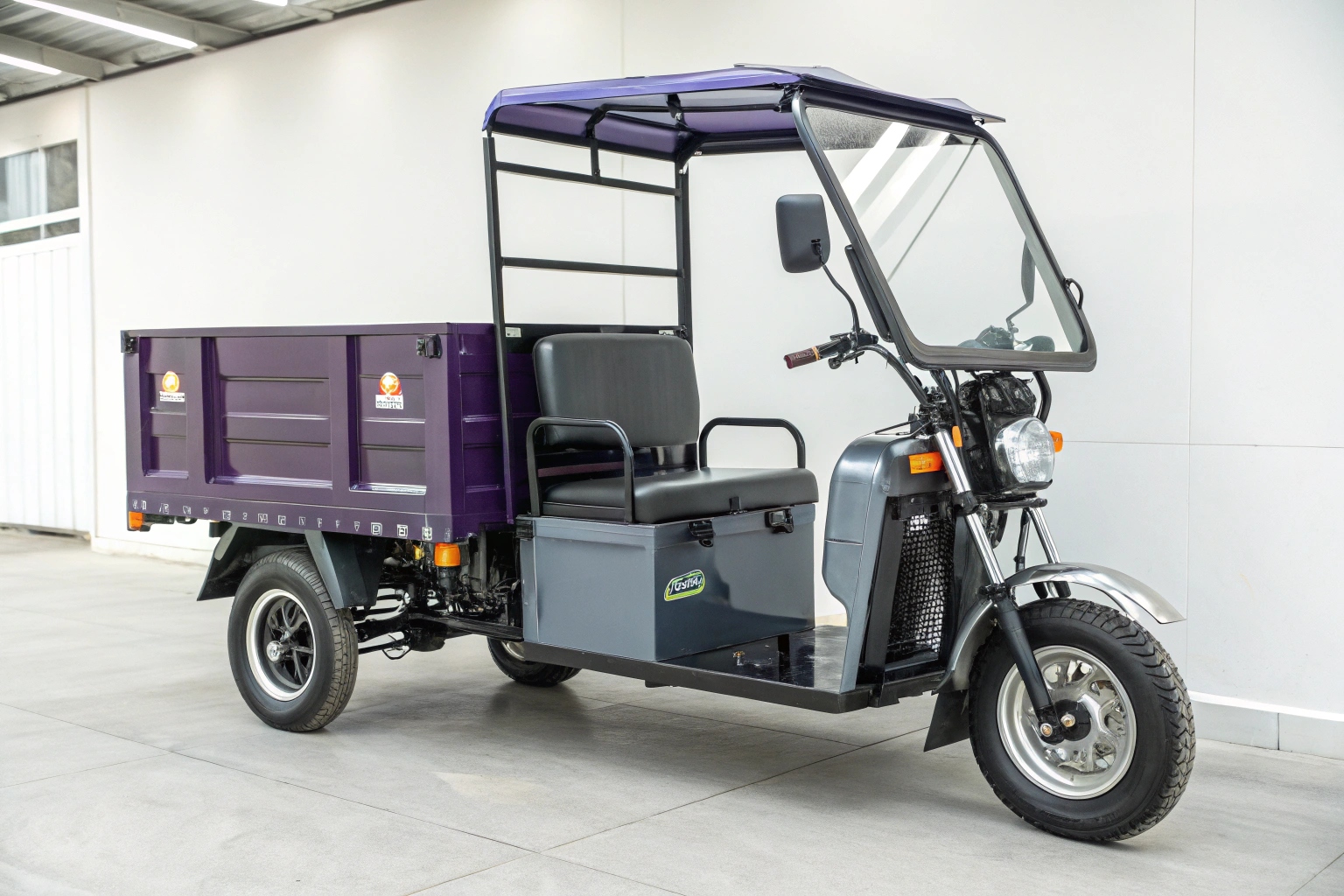
At our factory, performance is not an accident; it is engineered. We don't just take a standard cargo trike and add a garbage bin. We design our sanitation vehicles from the ground up to excel in tight urban environments. I remember working with our engineering team to perfect the steering. We built a mock-up of a narrow alley and tested different front fork angles and wheelbase lengths until we found the perfect balance between quick turning and stability, even with a full load.
Our design philosophy focuses on several key elements:
- Optimized Steering Geometry: We use a specific rake and trail angle in our front fork assembly. This allows the steering to be light and responsive without feeling unstable at low speeds.
- Short Wheelbase: The distance between the front and rear wheels is kept as short as possible, which is the primary factor in achieving a tight turning circle.
- Low Center of Gravity: By placing the heavy battery pack low in the frame, the trike remains stable during sharp turns, preventing the risk of tipping.
- Reinforced Frame: The steel frame is designed to be narrow yet strong enough to handle the stress of constant turning under a heavy load.
These design choices, combined with a powerful differential motor for the rear wheels, result in a vehicle that is not just agile, but also safe and easy for operators to handle all day long.
Which cities or regions require compact-turning sanitation vehicles?
You want to expand your business, but you're not sure which markets have the biggest need for agile vehicles. Targeting a city with wide, open roads would be a missed opportunity.
High-density cities, informal settlements, historic districts, and coastal port towns are primary markets. These areas demand waste vehicles with a turning radius under 3 meters to ensure complete and efficient collection coverage.
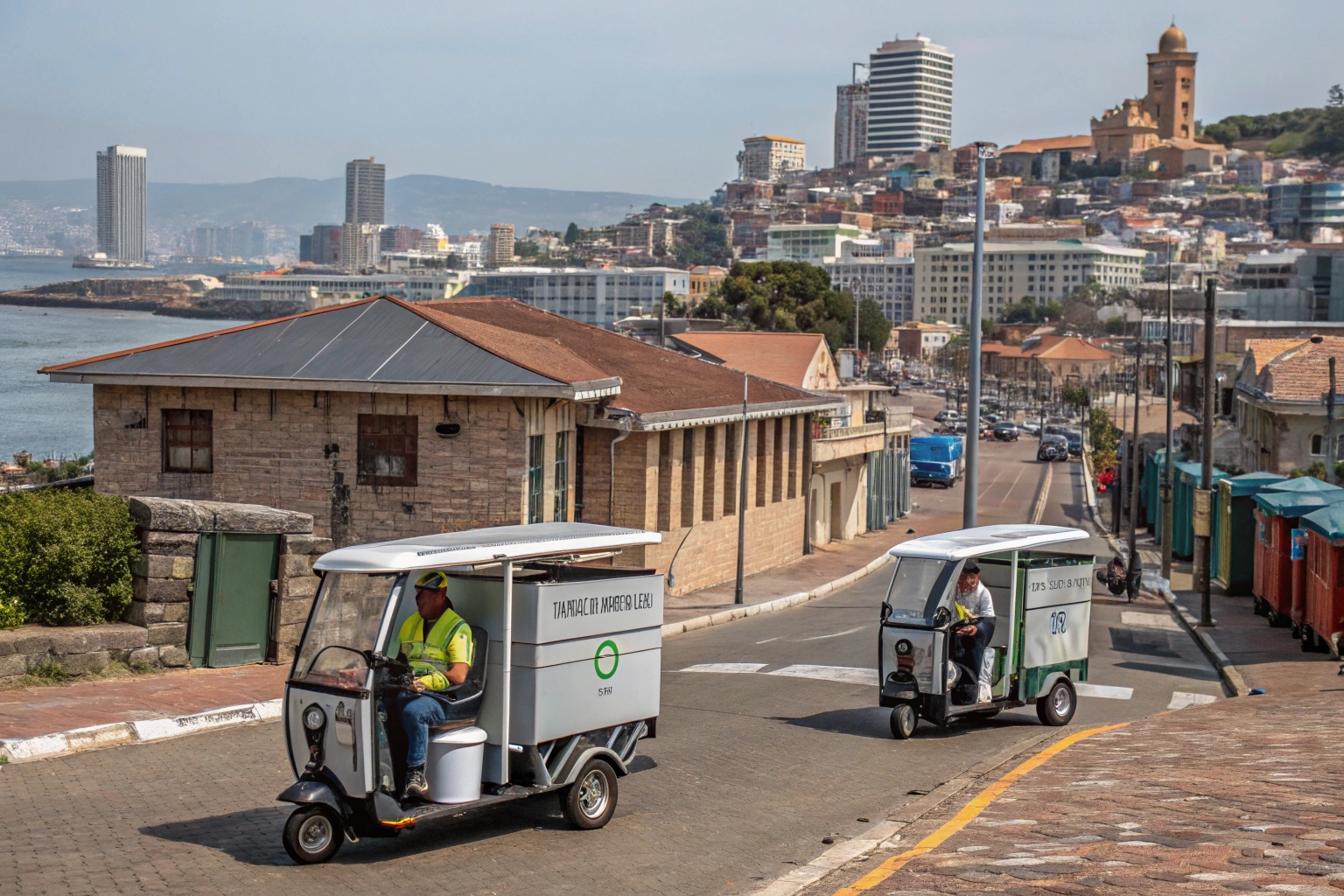
The orders we receive at our factory tell a clear story about global urban geography. The demand for highly maneuverable vehicles is not random; it is concentrated in specific types of environments where space is a luxury. Based on our export data, these are the top markets:
- Informal Urban Zones: Across Africa, Southeast Asia, and Latin America, many urban areas have grown organically without a planned street grid. The World Bank notes that these zones are a major part of most cities in Sub-Saharan Africa. The only way to provide services here is with a vehicle that can navigate narrow, winding paths.
- Historic City Centers: Many cities in Europe, the Middle East, and Latin America have protected historic cores with streets that were built centuries before cars existed. Standard vehicles are often banned or are simply too large to fit.
- Island and Coastal Towns: In places like the Philippines or the Caribbean, communities are often densely packed into limited coastal land. The roads are tight, and a small turning radius is essential.
- Busy Market Areas: In any major city, the streets around traditional markets are often clogged with vendors, pedestrians, and goods. Only the most nimble vehicle can get through to collect waste during operating hours.
Our clients from these regions don't ask for a small vehicle as an option; they demand it as a core requirement.
Pangwakas na Salita
The right turning radius is not a minor detail. It is the fundamental feature that enables efficient waste collection in the world's

